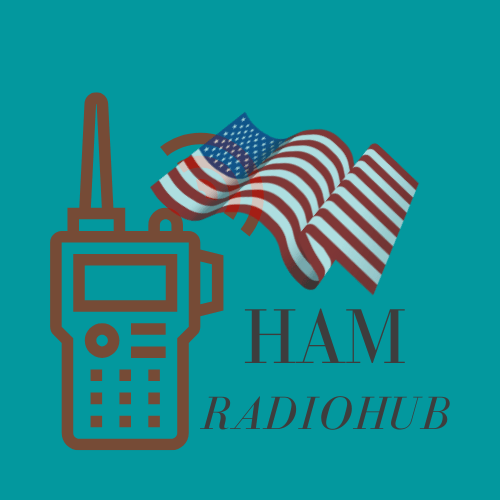Ham radio signal reports is one of the preliminary part of essentials to become a successful amateur radio operator.
While communicating across vast distances, clear and accurate communications is crucial.
To ensure the same ham radio operators rely on a standardized ham radio signal report system which is known as the RST system.
RST, which stands for Readability, Signal Strength, and Tone, provides a concise method for assessing and exchanging information about the quality of received radio signals. This article explores the intricacies of the RST system, its components, and how it enables operators to evaluate and compare signal conditions.
Ham radio signal report || What is RST system?
The RST system is a simple yet effective method used by ham radio operators to report signal quality. It is a shorthand method which utilizes three digits, each representing specific aspect of the signal being received.
It is a standardized way of expressing signal reports that ensures clarity and uniformity in communication across different radio stations.
The three components of the RST system are Readability (R), Signal strength (S) and Tone (T) respectively.
Ham radio signal report || Interpreting the RST values
In the ham radio signal reports, i.e. the RST system, values of Readability (R), Signal strength (S) and Tone (T) are interpreted as below:
Readability (R)
The Readability (R) component of the RST system focuses on assessing the clarity and ease with which a radio transmission can be understood. It considers factors such as the presence of noise, interference, or fading that may affect the overall intelligibility of the message. The readability scale ranges from 1 to 5, with 1 being the lowest and 5 being the highest.
- – R1: Unreadable
- – R2: Barely readable, occasional words distinguishable
- – R3: Readable with difficulty, considerable effort required
- – R4: Readable with practically no difficulty
- – R5: Perfectly readable
Signal strength (S)
The second digit in the ham radio signal reports i.e. RST system denotes the strength of the received signal. It measures the power level of the signal as received by the operator’s equipment. The range for Signal strength (S) scale varies from 1 to 9. Here 1 indicates an extremely weak signal and 9 indicates an exceptionally strong signal.
- S1: Faint signal, barely perceptible
- S2: Very weak signal
- S3: Weak signal
- S4: Fair signal
- S5: Fairly good signal
- S6: Good signal
- S7: Moderately strong signal
- S8: Strong signal
- S9: Extremely strong signal
Tone (T)
The Tone (T) component of the ham radio signal report i.e. RST system evaluates the quality and characteristics of the received signal’s audio tone. It provides insights into factors like distortion, hum, noise, or other anomalies affecting the audio quality. The tone scale ranges from 1 to 9, with 1 representing a severely distorted or noisy tone and 9 indicating an exceptionally clear and pure tone.
- – T1: Extremely rough tone, highly distorted
- – T2: Very rough tone, severe distortion
- – T3: Rough tone, some distortion
- – T4: Slightly rough tone
- – T5: Good tone
- – T6: Good tone, slight trace of distortion
- – T7: Practically perfect tone
- – T8: Very good tone
- – T9: Perfect tone, pure and clear
Ham radio signal report || RST system pdf download
For your convenience, here is the pdf download for RST signal reporting that you can keep with your ham shack. Click here to go to our download page.
Get this beautiful RST signal report chart Digital Download that is printable and use it on you Ham Shack for quick reference at just $2.99.
Click here: RST Signal Report Digital Download
Ham radio signal report || Reporting RST values
Now that we understand the components of the RST system, let’s explore how to utilize this system effectively during ham radio communication:
Step 1: Evaluating Readability
When providing a signal report, start by assessing the readability of the received signal. Consider factors such as background noise, interference, and any difficulties in understanding the message. Assign a digit between 1 and 5 to represent the readability of the signal.
Step 2: Measuring Signal Strength
Next, determine the signal strength of the received transmission. Take into account factors like antenna performance, atmospheric conditions, and any fading or attenuation of the signal. Assign a digit between 1 and 9 to represent the signal strength.
Step 3: Assessing Tone Quality
Finally, evaluate the quality of the received audio tone. Pay attention to any distortion, hissing, or other anomalies that may affect the clarity of the signal. Assign a digit between 1 and 9 to represent the tone quality.
Step 4: Reporting the RST
Combine the three digits (R, S, and T) to form the complete RST signal report. For example, if the signal is easily readable (5), has a strong signal strength (9), and exhibits clear audio tone (9), the RST report would be 599. This format allows for quick and concise signal reports.
Advantages of Ham radio signal report RST system
The RST system offers several advantages for ham radio operators:
Standardization:
The RST system provides a standardized method for signal reporting, ensuring clear communication between operators worldwide.
Efficiency:
By utilizing a three-digit code, the RST system enables operators to quickly exchange signal reports without the need for lengthy explanations.
Accuracy:
The RST system allows for precise reporting of signal quality, facilitating accurate assessment and improvement of radio equipment and antenna systems.
Universal Applicability:
The RST system can be used across different modes of communication in ham radio, including voice, Morse code, and digital modes.
Compatibility:
Since the RST system is widely recognized and understood by ham radio operators, it promotes effective communication between individuals using different equipment and operating conditions.
Ham radio signal report: RST system Conclusion
Ham radio signal reports i.e. The RST system is an indispensable tool for ham radio operators to assess and report signal quality. By understanding the RST components and practicing accurate reporting, you can enhance your communication skills and improve overall signal reliability. Remember to be objective, practice active listening, and explore signal enhancement techniques to maximize the effectiveness of your ham radio communication.
FAQs on Ham radio signal report: RST system
Here are some FAQs that can be very helpful along the path of learning the RST system:
Q1: Can the RST system be used for all types of ham radio communication?
Answer: Yes, the RST system is applicable to various modes of ham radio communication, including voice, Morse code, and digital modes. It provides a universal framework for reporting signal quality.
Q2: Are there any alternative systems to the RST system for signal reporting?
Answer: While the RST system is widely used, there are alternative methods for signal reporting in specific modes or organizations. However, the RST system remains the most recognized and commonly employed system among ham radio operators.
Q3: Can the RST system be modified or expanded to include additional parameters?
Answer: The RST system is designed to be simple and concise, focusing on readability, signal strength, and tone quality. While modifications are possible, expanding the system with additional parameters may lead to complexity and reduced effectiveness in quick signal reporting.
Q4: How can I improve my signal strength when transmitting in ham radio communication?
Answer: To enhance signal strength, you can optimize your antenna system, improve grounding, eliminate sources of interference, and adjust transmission power within legal limits. Additionally, selecting appropriate frequency bands for your desired communication distance can significantly impact signal strength.
I hope this small guide on ham radio signal reporting system (the RST system) will help you a lot. Feel free to comment or contact. Cheers and happy hamming…
Other blog posts from the category:
- Baofeng BF F8HP Unlock frequencies (UV 5R Unlocking Guide) || Updated 2025
- Ham Radio vs Walkie Talkie: Differences: Updated 2025
- Baofeng uv-9g unlocking: Ultimate How to Guide Updated 2025
- Ham Radio vs GMRS: Comparative guide || Updated 2025
- HAM radio signal report: Know the RST system || Updated 2025


